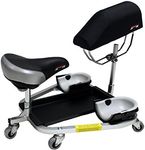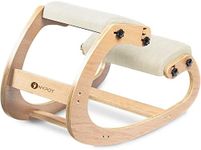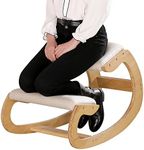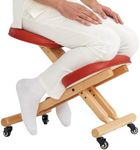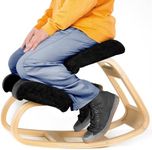Buying Guide for the Best Kneeling Chairs
Choosing a kneeling chair can be a great way to improve your posture and comfort, especially if you spend long hours sitting at a desk. The right kneeling chair can help reduce back pain and encourage a more active sitting position. When shopping for a kneeling chair, it's important to consider how you'll use it, your body type, and the features that will make it comfortable and supportive for you. Understanding the key specifications will help you find a chair that fits your needs and helps you sit better throughout the day.AdjustabilityAdjustability refers to how much you can change the height and angle of the seat and knee pads. This is important because it allows you to customize the chair to fit your body and desk height, ensuring proper posture and comfort. Some chairs offer fixed positions, while others have multiple adjustment options. If you plan to use the chair for long periods or share it with others, look for a model with more adjustability. If you only need it for short sessions or have a standard desk height, a simpler model may be enough.
Padding and CushioningPadding and cushioning describe how soft and supportive the seat and knee rests are. This is crucial for comfort, especially during extended use. Thin or hard padding can cause discomfort or pressure points, while thick, high-quality foam provides better support. If you have sensitive knees or plan to use the chair for many hours, choose a chair with generous, dense padding. For occasional use, moderate cushioning may be sufficient.
Weight CapacityWeight capacity is the maximum weight the chair can safely support. This is important for safety and durability. Chairs are usually divided into standard and heavy-duty categories. Standard chairs typically support up to 250 pounds, while heavy-duty models can handle more. Always check the weight limit to ensure the chair will be stable and long-lasting for your body type.
Frame MaterialFrame material refers to what the chair's structure is made from, such as wood or metal. This affects the chair's strength, weight, and appearance. Metal frames are usually more durable and can support more weight, while wooden frames may look more stylish but might not be as robust. If you need a sturdy chair for daily use, a metal frame is a good choice. If you prefer a certain look or lighter weight, a wooden frame might suit you.
Mobility (Wheels or Gliders)Mobility describes whether the chair has wheels or is stationary. Wheels make it easy to move the chair around your workspace, while stationary models stay in place. If you need to move your chair often or switch between workstations, look for a model with smooth-rolling wheels. If you want stability and don't plan to move the chair much, a stationary base is fine.
Seat AngleSeat angle is the tilt of the seat, which affects how much your hips are open and how your weight is distributed. A steeper angle encourages a more upright posture and can relieve pressure on your lower back, but may take time to get used to. Flatter angles are easier for beginners but may not offer as much postural benefit. If you're new to kneeling chairs, start with a moderate angle and adjust as you get comfortable.
